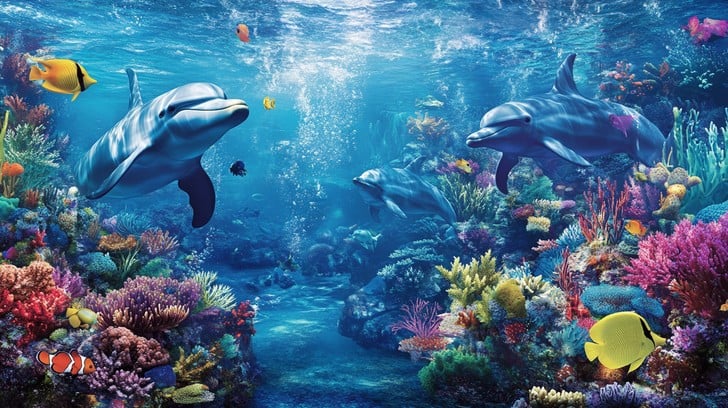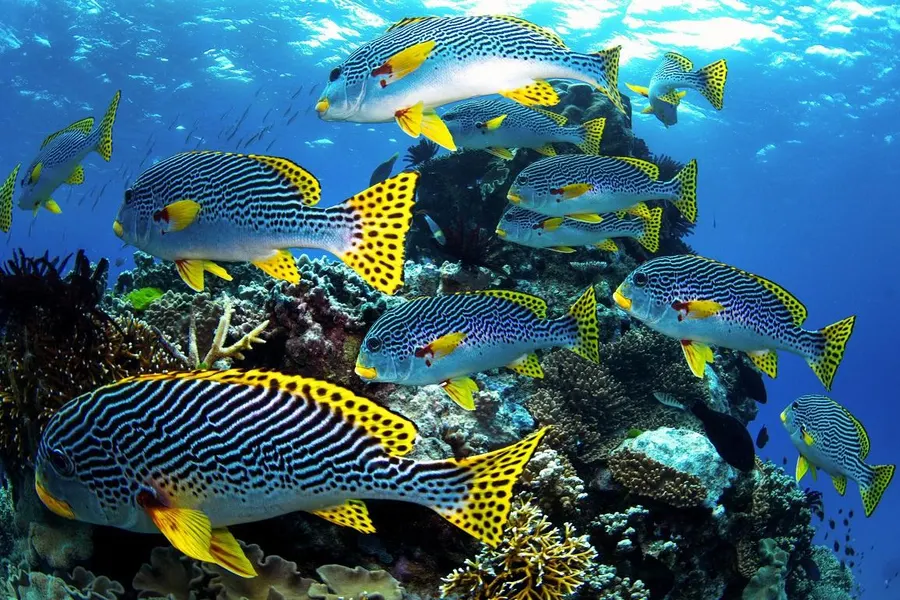The underwater world is a realm of breathtaking beauty and mystery, where vibrant coral reefs teem with life and delicate jellyfish drift through the water with mesmerizing grace. Exploring the world of sea jellyfish and coral reef fish opens up an extraordinary glimpse into the rich diversity of marine ecosystems, from their intricate relationships to their dazzling colors and fascinating adaptations. These creatures not only play vital roles in the ocean’s ecosystems but also captivate those lucky enough to witness their underwater splendor.
The Graceful World of Jellyfish
Jellyfish are some of the ocean’s most ancient and enigmatic creatures, having roamed the seas for over 500 million years. These gelatinous animals, belonging to the phylum Cnidaria, can be found in every ocean, from the surface waters to the deep sea. Their transparent, bell-shaped bodies and flowing tentacles make them one of the most distinctive and elegant inhabitants of the ocean.
Despite their delicate appearance, jellyfish are efficient predators. Their tentacles are lined with specialized cells called nematocysts, which contain tiny harpoons that release toxins to capture prey, such as small fish and plankton. Once stung, the prey is paralyzed and drawn into the jellyfish’s mouth, which is located in the center of its bell. Some species, such as the box jellyfish, are known for their potent venom, which can be deadly to humans, while others, like the moon jellyfish, are harmless.
One of the most fascinating aspects of jellyfish is their ability to pulse through the water with a rhythmic, undulating motion. This movement not only helps them drift with ocean currents but also allows them to propel themselves in search of food. In some regions, large swarms of jellyfish can be seen glowing in bioluminescent displays, lighting up the ocean with a soft blue or green glow—an unforgettable spectacle for divers and marine enthusiasts.

The Vibrant Coral Reef Fish
Coral reefs, often referred to as the “rainforests of the sea,” are home to an astonishing diversity of life. These underwater structures, built by tiny animals called coral polyps, provide a foundation for complex ecosystems that host a wide variety of fish species. Coral reef fish are among the most colorful and visually stunning creatures on Earth, with patterns and hues that range from electric blues and bright yellows to deep reds and vibrant oranges.
Fish such as clownfish, angelfish, and parrotfish are among the most iconic reef dwellers, each with unique adaptations that allow them to thrive in these busy, vibrant environments. Clownfish, for instance, live in symbiotic relationships with sea anemones, using the anemone’s stinging tentacles for protection from predators. In return, they help keep the anemone clean by feeding on parasites and debris.
Another notable reef resident, the parrotfish, plays a crucial role in maintaining the health of coral reefs. These fish feed on algae that grow on the surface of coral, preventing the algae from smothering the reef. As they munch on the coral, parrotfish also excrete fine sand, contributing to the formation of tropical beaches.
The vibrant colors of coral reef fish are not just for show; they serve a variety of functions, from attracting mates to warding off predators. Some species, like the lionfish, use their bold stripes and venomous spines to signal danger, while others blend into the colorful coral to avoid being detected by larger predators. The intricate patterns of camouflage and mimicry found in coral reef fish are a testament to the incredible adaptations that have evolved in these environments.

The Interconnectedness of Reefs and Jellyfish
Jellyfish and coral reefs, though seemingly different, are part of the interconnected web of life in the ocean. Coral reefs provide habitats for countless species, including many small fish and plankton that jellyfish rely on for food. Conversely, jellyfish blooms, which sometimes occur due to changing ocean conditions, can affect reef ecosystems by reducing the availability of plankton for other species.
Human activities, such as overfishing and climate change, have put both jellyfish and coral reefs at risk. Rising ocean temperatures and pollution contribute to coral bleaching, where reefs lose their vibrant colors and life. Similarly, some jellyfish populations are increasing in response to the decline of their natural predators and changes in ocean currents, highlighting the delicate balance of marine ecosystems.

Conclusion
The world of jellyfish and coral reef fish is a stunning display of nature’s creativity and resilience. Whether it’s the ethereal beauty of jellyfish floating through the deep or the vibrant life bustling around a coral reef, these creatures offer a window into the wonders of the ocean. Protecting these ecosystems from the threats of climate change and human activity is crucial to preserving the rich biodiversity and beauty of our oceans for future generations to explore and admire.



